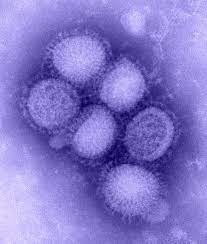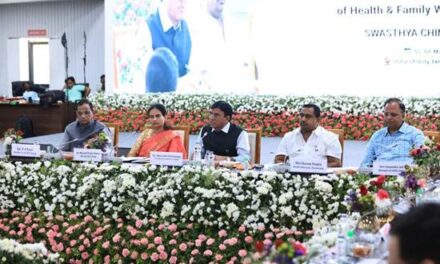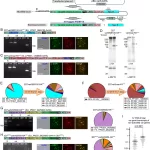Situation at a Glance
Description of the Situation
On 29 January 2024, the National authorities of Spain notified WHO of a laboratory confirmed human infection with a swine influenza A(H1N1)v virus in the country. The patient is an adult male who worked on a pig farm in the province of Lleida, who was confirmed positive through sample testing and sequencing.
The patient, who has completely recovered, developed symptoms on 25 November 2023. These included fever, malaise, and cough. He first attended an outpatient clinic on 29 November 2023, and was seen again twice in December 2023, where he was diagnosed with bronchitis. He did not receive any antiviral treatment.
On 12 December 2023, a nasal and oropharyngeal (back of the mouth and throat) sample was taken and sent to the laboratory of the regional hospital for testing, where it tested positive for an influenza A virus on 14 December 2023 but could not be subtyped.
The sample was subsequently sent to a national surveillance network lab for sequencing, where swine influenza A(H1N1) virus was identified and notified to the General Sub-Directorate for Surveillance and Response to Public Health Emergencies of Catalonia on 10 January 2024.
The sample was sent for confirmation to the National Institute of Microbiology on 19 January 2024 and the virus isolate will also be shared with the WHO Collaborating Centre for Reference and Research on Influenza at the Francis Crick Institute in London, United Kingdom.
Epidemiology
Influenza A (H1) viruses are enzootic in swine populations in most regions of the world. When an influenza virus that normally circulates in swine is detected in a person, it is called a “variant influenza virus”. A(H1N1), A(H1N2), and A(H3N2) are major subtypes of swine influenza A viruses in pigs which occasionally infect humans, usually after direct or indirect exposure to pigs or contaminated environments. Human infections with variant viruses tend to result in mild clinical illness, although some cases have been hospitalized with more severe disease and some have been fatal.
To date, sporadic human infections caused by influenza A(H3N2), A(H1N1), and A(H1N2) variant viruses have been reported in the WHO European Region; there has been no evidence of sustained human-to-human transmission. Including the current case, three cases of human infection with influenza A(H1N1)v virus have been reported in Spain. The first case was reported in 2008[1] and the second case was reported in January 2023.
Public Health Response
Epidemiological investigations were initiated by public health authorities in Catalonia. No secondary cases were identified among the three close family contacts. None of the other farm workers have reported symptoms to date, and follow-up of these workers has been completed.
The General Sub-Directorate for Surveillance and Response to Public Health Emergencies of Catalonia contacted the Department of Climate Action, Food and Rural Agenda, responsible for animal health, which confirmed that outbreaks of influenza A in swine are not subject to mandatory notification, and there is no control or follow up expected in the swine population.
WHO Risk Assessment
Most human cases with influenza A(H1N1)v virus infection result from exposure to swine influenza viruses through direct or indirect contact with infected swine or contaminated environments. However, some cases have been reported without an apparent source of exposure to swine in the weeks prior to illness onset. Because these viruses continue to be detected in swine populations worldwide, further human cases following direct or indirect contact with infected swine can be expected. Swine variant cases have been reported in recent years from many countries, including in Europe.
Current evidence suggests that these viruses have not acquired the ability to sustain transmission among humans: there has been limited, non-sustained human-to-human transmission of variant influenza viruses, but ongoing community transmission has not been identified.
The risk of detecting additional human cases associated with this event and further spread of the disease in humans is considered low.
The risk assessment will be reviewed should further epidemiological or virological information become available.
WHO Advice
Surveillance:
- This case does not change the current WHO recommendations on public health measures and seasonal influenza surveillance.
- WHO does not advise special traveler restrictions or screening at points of entry concerning the current situation of influenza viruses at the human-animal interface.
- Due to the constantly evolving nature of influenza viruses, WHO continues to stress the importance of global surveillance to detect virological, epidemiological and clinical changes associated with circulating influenza viruses that may affect human (or animal) health, and timely virus sharing for risk assessment.
Notification and investigation:
- All human infections caused by a novel influenza subtype are notifiable under the International Health Regulations (IHR), and States Parties to the IHR (2005) are required to immediately notify WHO of any laboratory-confirmed case of a recent human infection caused by an influenza A virus with the potential to cause a pandemic. Evidence of illness is not required.
- In the case of a confirmed or suspected human infection caused by a novel influenza virus with pandemic potential, including a variant virus, a thorough epidemiologic investigation should be conducted, including a history of travel and animal exposure; and contact tracing should be implemented. The epidemiologic investigation should include early identification of unusual respiratory disease events that could signal person-to-person transmission of the novel virus. Clinical samples collected from the time and place of the case should be tested and sent to a WHO Collaborating Centre for further characterization.
Travel and trade:
- WHO does not recommend any travel and/or trade restrictions for Spain based on the currently available information.
- General hygiene measures, such as regular hand washing before and after touching animals as well as avoiding contact with sick animals, should be adhered to.
Prevention measures for travelers:
- Travelers to countries with known outbreaks of animal influenza should avoid farms, contact with animals in live animal markets, entering areas where animals may be slaughtered, or contact with any surfaces that appear to be contaminated with animal feces. Travelers should also wash their hands often with soap and water.
- Influenza viruses that infect pigs are different from human influenza viruses. There is no vaccine for zoonotic influenza infection licensed for use in humans. However, the development of influenza candidate vaccine viruses (CVVs) for novel zoonotic influenza, coordinated by WHO, remains an essential component of the overall global strategy for influenza pandemic preparedness. Vaccines against human influenza viruses are generally not expected to protect people from infection with influenza viruses that normally circulate in pigs. Nevertheless, WHO recommends seasonal influenza vaccination to avoid severe illness from infection with circulating influenza viruses.
Further Information
- WHO. Current technical information, including monthly risk assessments at the Human-Animal Interface
- WHO. Influenza (Avian and other zoonotic).
- WHO. Influenza virus infections in humans October 2018.
- Standardization of terminology for the influenza virus variants infecting humans
- WHO. Case definitions for diseases requiring notification under the IHR (2005).
- WHO. IHR (2005).
- WHO Manual for the laboratory diagnosis and virological surveillance of influenza (2011).
- WHO. Terms of Reference for National Influenza Centers of the Global Influenza Surveillance and Response System.
- WHO. Public health resource pack for countries experiencing outbreaks of influenza in animals: revised guidance.
- WHO. Protocol to investigate non-seasonal influenza and other emerging acute respiratory diseases.
- WOAH. Swine influenza.
- ECDC. Zoonotic influenza – Annual Epidemiological report for 2022.
- ECDC. Factsheet on swine influenza in humans and pigs.
- WHO. Genetic and antigenic characteristics of zoonotic influenza A viruses and development of candidate vaccine viruses for pandemic preparedness.
Citable reference: World Health Organization (9 February 2024). Disease Outbreak News; Influenza A(H1N1) variant virus – Spain. Available at: http://www.who.int/emergencies/disease-outbreak-news-/item/2024-DON503
[1] Eurosurveillance vol.14, issue 7, 19 February 2009, https://www.eurosurveillance.org/images/dynamic/EE/V14N07/art19120.pdf











